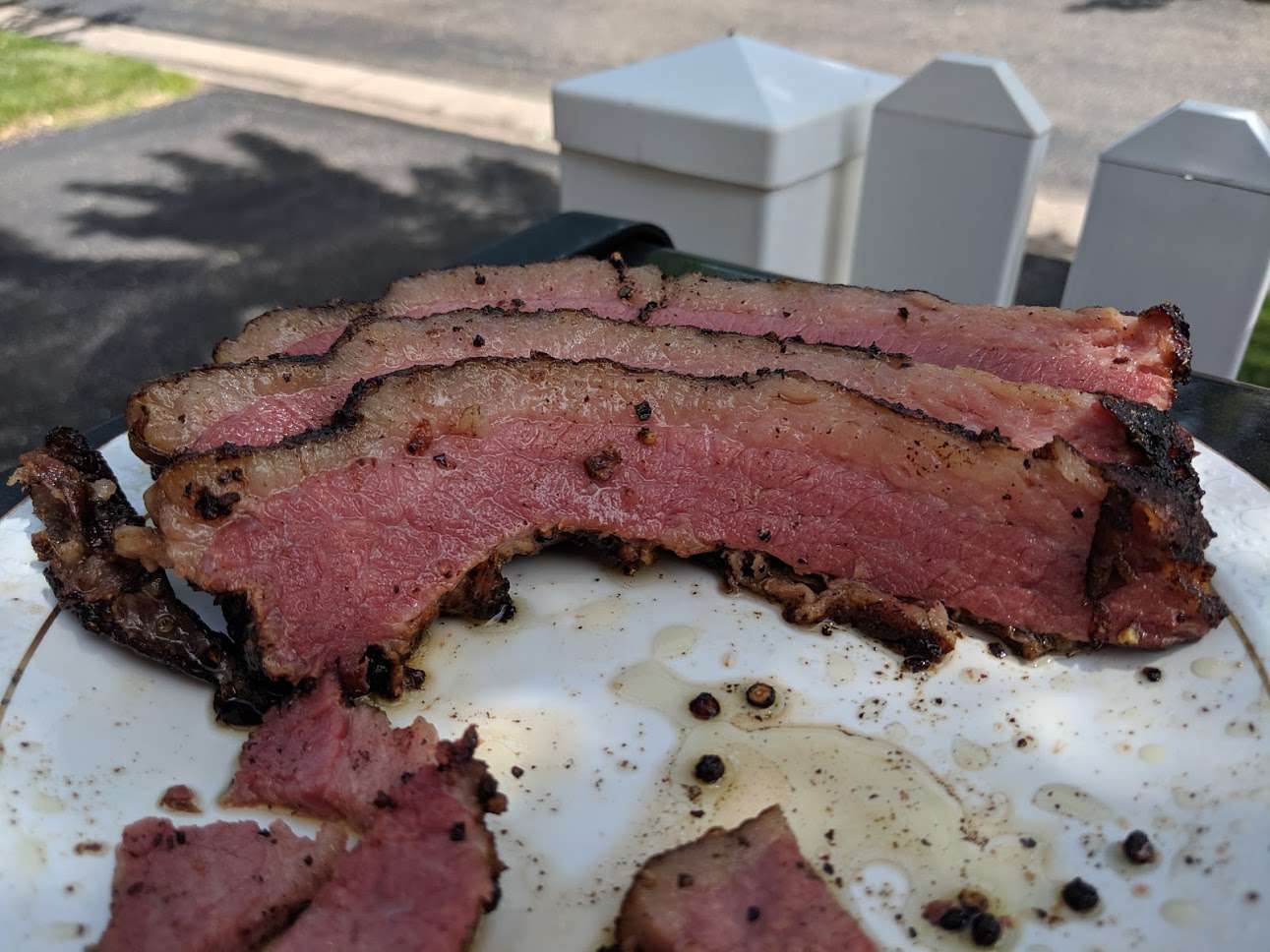
Prep Time::30 mins
Cook Time:: 23 hrs 10 mins
Additional Time::5 days 45 mins
Total Time::6 days 25 mins
Servings::24
Ingredients
Oops! Something went wrong. Our team is working on it.
12 pounds beef brisket
Brine:
1 gallon water
2 cups white sugar
1 ½ cups kosher salt
10 cloves garlic, crushed
4 teaspoons pink curing salt
1 gallon ice cubes
Pickling Spice:
1 tablespoon coriander seeds
1 tablespoon whole black peppercorns
1 tablespoon mustard seeds
1 tablespoon red pepper flakes
1 tablespoon whole cloves
1 teaspoon ground ginger
2 bay leaves
Directions
Trim off fat cap of brisket; poke some holes in meat with a paring knife.
Bring water to a boil in a large pot on the stovetop. Remove from heat; as it starts to cool down, add white sugar, kosher salt, garlic, and pink curing salt.
Find a food-grade, nonreactive container with a lid; pour in brine and ice, then add brisket. Keep brisket in brine for 5 to 7 days in the refrigerator. Flip brisket every 24 hours.
After brining, pull brisket out of the container and rinse under cold water.
Heat a pan over low heat. Toast coriander seeds, peppercorns, and mustard seeds in the hot pan, about 2 minutes. Remove and transfer to a food processor; add red pepper flakes, cloves, ginger, and bay leaves. Grind well.
Use 1/2 of the spice mixture to coat brisket; seal in a food saver bag. Reserve remaining spice mixture. Place brisket in a sous vide at 137 degrees F (58 degrees C) for 18 hours.
Remove from sous vide, cut open the bag, and brisket set out to dry and rest on a wire rack from a smoker for 30 minutes. Use remaining pickling spices to re-coat brisket.
Place a wire rack in the smoker. Add wood chips according to manufacturer's directions and heat to 225 degrees F (107 degrees C).
Smoke brisket until browned, tender, and no longer pink in the center, about 5 hours. Pull brisket from the smoker and let rest for 15 minutes before slicing.
Editor's Notes:
Always brine foods in a food-grade, nonreactive container such as a stainless steel or enameled stockpot, a brining bag, or a food-grade plastic bucket.
Nutrition data for this recipe includes the full amount of brine ingredients. The actual amount of brine consumed will vary.